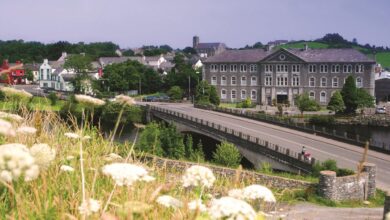‘Ethno-nationalism’: new interethnic tensions in Latin America
by Luis Esteban González Manrique, del Real Instituto Elcano, Jul-19-05
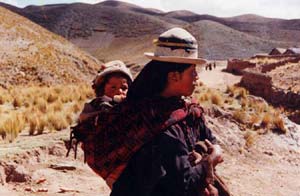
Summary: In many Latin American countries the proliferation of new ‘armed actors’ is linked with the gradual organising of ethnic groups claiming a greater degree of territorial and political autonomy. The Movimiento al Socialismo (Movement towards Socialism, MAS) led by Evo Morales in Bolivia, the Confederación de Nacionalidades Indígenas (Confederation of Indigenous Nationalities of Ecuador, also known by its Spanish acronym Conaie) in Ecuador and the Movimiento Etnocacerista (‘Ethno-cacerista’ Movement, also known by its Spanish acronym ME) in Peru, denounce the ethnic discrimination of ‘native nations’. Even in Venezuela certain sectors of Chavism talk of the oligarchy’s presumed struggle against mestizos (mixed race of white and Indian ancestry) and mulatos (mixed race, of black and white ancestry). Elizabeth Burgos, a Venezuelan analyst, defines the ‘Bolivarian’ process as ‘national-ethnic-populism with traces of neofacism’, a type of inverted racism sponsored by Chávez as part of his continental revolution. The economic consequences could be dangerous if this phenomenon were to jeopardise the exploitation of natural resources -gas, oil, gold- in territories with a significant indigenous population.
Analysis: In its latest study of global trends for the next 15 years -Mapping the Global Future: Report of the National Intelligence Council’s 2020 Project-, the United States National Intelligence Council devotes very few pages to Latin America, but its diagnosis of the main threat to security in the region is clear: the failure of governments to find solutions to extreme poverty and ingovernability could encourage populism, radical indigenism, terrorism, organised crime and anti-American feeling. At the same time, Dirk Kruijt and Kees Kooning, in their book Armed Actors: Organized Violence and State Failure in Latin America stress that the proliferation of ‘armed actors’ in the region is partly due to ethnic tensions that are violently erupting in various countries, particularly in the central Andean nucleus: Ecuador, Peru and Bolivia.
Some groups reject globalisation, perceived as a homogenising phenomenon that undermines their cultures with an economic model based on the exploitation of indigenous populations and their ecosystems. Michael Radu, of the Foreign Policy Research Institute, has criticised Washington’s ‘paralysis’ when faced with the ‘increasing radicalisation of indigenous peoples in the central Andean region’. In turn, Michael Weinstein foresees a new ‘cycle of instability’ in the central Andes, the signs of which are ‘massive protest marches, road blocks, the taking of official buildings, regional rebellion, uninvolved governments and anti-constitutional attempts by governments to extend their powers’.
National-ethnic-populism
Some of the political protagonists are the Confederación de Nacionalidades Indígenas (Conaie) in Ecuador and the Movimiento Etnocacerista (ME) led by brothers Ollanta and Antauro Humala in Peru, Movimiento al Socialismo (MAS) led by cocalero leader Evo Morales in Bolivia, and the Movimiento Indigenista Pachacutik (Pachacutik Indigenist Movement) led by Felipe Quispe, an Aymara, who seeks to establish a Quechua-Aymara State in southern Peru and northern Bolivia under the name ‘Collasuyo’, as the region was called during the Inca empire. The philosophy of Quispe and Antauro Humala is openly xenophobic towards the Creoles, akin to inverted racism. In Bolivia, the most violent demonstrations took place in communities of Quechua and Aymara immigrants established in El Alto, an overpopulated suburb of La Paz, which maintains the strong original cohesion of rural communities. The latter confers a very efficient organisational capacity to block roads, paralyse markets and even ambush police and military patrols. This scenario has been joined by peasant protests in the major agricultural regions -Yungas and Chapare- against government campaigns to eradicate coca farming.
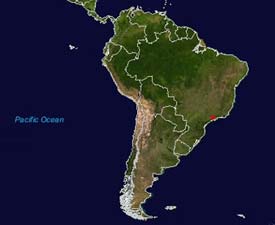
According to Weinstein, ethnic mobilisation adopts the form of direct action because the indigenous segment of the Andean population has kept its community ties. Venezuelan writer Elizabeth Burgos includes Hugo Chávez among ‘ethno-nationalist’ leaders, characterising the ‘Bolivarian’ process as ‘national-ethnic-populism’ based on the philosophy of a Venezuela split into two parts: one with a western and Creole imaginarium and the other filled with mestizo and mulato ancestors. When defining the confrontation in almost racist terms -‘They don’t want us. The oligarchy despises us. They have always looked down on us’- Chávez stirs resentment and resorts to differences and experiences of rejection. Historian Margarita López Maya told the National Assembly in August 2004 that a nation of ‘mulato and mestizo ancestors’ is emerging, which was formerly hidden and silent.
The Jornal do Brasil, openly pro-Lula da Silva, said in an editorial that: ‘Venezuela has become the first reason for discord between the US and Brazil. Chávez has money and is far from being inoffensive he seeks a villain to justify the creation of a popular militia and to arm his troops. The list of explosive ingredients is increased because, in the same way as Ecuador, Peru and Bolivia, Venezuela has a fratricide fight between a white elite and a poor and mainly indigenous and mestizo population’. Chávez’s mixture of Peronism and Guevarism confirms the strength of the populism that is spreading throughout South America and which could even ultimately affect Uribe’s Colombia and the Chile of ‘Concertation’.
Gonzalo Sánchez de Lozada, ex-president of Bolivia, accused Chávez of having financed the ‘indigenist and cocalero movement’ that put an end to his mandate. Evo Morales was an assiduous visitor to Caracas, where he was received by Chávez on several occasions. Morales is an agitator who denounces multinationals and imperialism. Venezuela is Latin America’s main oil and gas supplier. Some analysts believe Hugo Chávez could be using Morales and MAS to invalidate any investments that could compete with Venezuela and to associate Bolivia in his ‘Bolivarian’ project. Evo Morales has a certain following in Peru and Ecuador, both of which are countries with conditions similar to those in Bolivia.
These warnings are taken very seriously in Washington. The Secretary of State, Condoleeza Rice, told the Senate that the Bush administration ‘is perfectly aware of the difficulties Chávez is causing his neighbours’. In the Pentagon it is believed that Chávez is using oil money to intervene in the internal politics of his neighbours and, to do this, is selecting those with a more vulnerable social fabric, sometimes by openly subversive means.
The ‘Bolivarian’ International
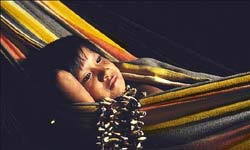
Humala’s riot to demand the resignation of Alejandro Toledo was orchestrated in the style of Chávez in 1992 and Lucio Gutiérrez in 2000: an insubordination that served them as an antechamber to their successful bid for political power. The ideological eclecticism of Chávez led him to support movements that defend a combination of ethnic nationalism and left-wing populism, which in the ME’s case resorts to profuse fascist-based symbolism: uniforms, red berets, flags, standards with eagles and armbands, in an attempt to identify their uniform with the ‘native race’. Humala’s attack was anticipated by analysts who warned of a paramilitary organisation that claimed ‘globalisation of the guillotine for the corrupt’. In 2000, the Humala brothers led an abortive uprising against the government of Alberto Fujimori, shortly before he fled the country.
Valentín Paniagua’s government pardoned Ollanta Humala, who re-entered the army, but his brother Antauro dedicated himself to organising the ME, and was soon accused of being financed by drug-dealing, given his support for cocalero protests. The ME is akin to a sect: it purports to defend a reconstituted ‘moral code of the Incas’ and the memory of Marshall Avelino Cáceres, a hero of the war with Chile (1879-83) who organised peasant militias against the invaders. The ME preaches hatred by the copper-skinned population towards the whites of Peru, Chile, the US and Israel, approximately in that order. Nobody has asked for the release of Humala, which reveals his political orphanhood, but his ‘ethno-nationalist’ philosophy reveals the social tensions just below the country’s surface. The racial issue had never formed part of the programme of any political player. The ME was the first to do so, although the Permanent Coordinator of the Indigenous Peoples of Peru has unequivocally denounced the violence advocated by the ME.
Humala sought media exposure rather than a bloodbath: to be the protagonist of an event that would capture public attention at the start of a pre-electoral year, thus permitting a greater political relevance for an eventual election campaign. The horror of the population over the Andahuaylas murders led Ollanta Humala, a military attaché in the Peruvian Embassy in Seoul until December 2004, to detach himself from his brother’s attempt to present ‘ethno-cacerism’ in society. Nevertheless, some polls showed a high level of support (28%) for the attack on the police post.
Norberto Ceresole, the Ideologist
The ideological kinship between Chávez, Humala and Morales has a moral antecedent: Peronism, the prime example of the rise of a popular nationalist force. Peron made no bones of his admiration for Mussolini and Italian fascism. Chávez drew on Peronism through his relationship with the Argentine sociologist Norberto Ceresole, a complex and eccentric character who advised him for years before he dismissed him -among other things because of his declared anti-Semitism- and ordered his expulsion from Venezuela in 1999. Ceresole died in Buenos Aires in 2003 having maintained that his expulsion from Venezuela was due to ‘Jewish persecution’. Ceresole’s formula, formally published in Madrid in 2000, establishes that the leader guarantees power through a civil-military party, based on a model denominated ‘post-democracy’. In the long term, according to Ceresole, ‘Bolivarian’ integration of the continent would lead to a Confederation of Latin American States in which the armed forces would hold the reins of economic, social and political development and the security of the continent.
Chávez has never renounced military symbolism. According to El Universal of Caracas, more than 100 military personnel, the majority in active service, hold management and confidential positions in State companies, regional and national departments and institutes, government funds, foundations and special commissions. In the regional elections held in October 2004, 14 of the 22 official candidates designated by Chávez originated from the armed forces. According to Chávez: ‘When I speak of armed revolution, I am not using metaphors; armed means having rifles, tanks, aircraft and thousands of men ready to defend it’. Venezuela already has more officers than Mexico and Argentina together and 120 civilians have been tried by military courts. This model would not function without oil.
The Caracas-Havana Axis
Roger Noriega, Undersecretary of State for hemispheric affairs, has declared that the US is concerned about the possibility of the 100,000 AK rifles Venezuela is to purchase from Russia ending up in the hands of ‘criminal groups, militias or guerrillas’. Chávez says that they will be delivered to ‘popular defence units’, which will report directly to the president, in a strategy his opponents attribute more to an intended policy of internal control than to a real military threat from abroad. Chávez will be unable to guarantee that these weapons will not end up in the wrong hands. Venezuela has thousands of poorly guarded kilometres of border through which these weapons could pass, as occurred in Central America with the arms that were sent to that region during the 70s and 80s.
During his visit to the Social Forum in Porto Alegre, Chávez warned that he would consider any attack against Cuba as an attack against Venezuela. The Caracas-Havana axis completes the complex scenario of the new strategic situation of the region and the surge of ‘ethno-nationalism’ as one of its key factors. Following the defeat of Sandinism in Nicaragua, Fidel Castro seemed to have pledged a truce to a widely pacified continent. But Chávez -who was received by Castro in 1995 with the honours of a Head of State a few days after he had been released from prison by the government of Rafael Caldera- appears to have restored his hopes of realising Che Guevara’s dream: with Venezuelan oil -Castro told Régis Debray in 1962- the continental revolution will be a matter of months.
In return for Venezuelan oil, Cuba is sending teachers, cultural and sports advisers and doctors who disseminate political propaganda, along with community services provided by Venezuelan military garrisons. Chávez has a further advantage: his power is the result of a democratic process. According to a former employee of the American Department of the Communist Party Central Committee: ‘Fidel does not want to make the same mistake as in Chile; he now does everything lawfully’.
The strategy has multiple fronts. Chávez’s repeated visits to the World Social Forum in Porto Alegre were obviously intended to serve as a platform for political propaganda. The Landless Workers’ Movement (MST) in Brazil proposed to the international committee organising the Forum that the event be held in Caracas in 2006. This has widened the divide between those who believe that this should be a plural event and those who believe it should be organised as a kind of global political party.

These tensions are present within a specific geopolitical framework: the Presidents of Colombia, álvaro Uribe, and Peru, Alejandro Toledo, have strengthened their political and military ties with the US while, according to the Washington Post, Chávez’s government is negotiating arms purchases in Russia to the amount of US$5.0bn, including a fleet of 40 helicopters and latest generation Mig-29 fighter-bombers, and has bought Tucano aircraft from Brazil and frigates and military transport aircraft from Spain.
A Continental Dimension
Chávez and Castro seem to have perceived the ‘revolutionary’ potential of indigenous claims. Although the criteria used in ethnic definitions vary from one country to another, it is estimated that there are more than 400 identifiable ethnic groups in Latin America, with almost 40 million persons, ranging from small Amazon forest tribes to the Andean Quechua and Aymara macro-ethnic groups. Mexico has the most numerous ethnic population in Latin America, of around ten million, but which represents only between 12% and 15% of the total population. On the other hand, the indigenous peoples of Guatemala and Bolivia represent the majority of the national population and almost one half in Peru and Ecuador. According to estimates made by the ECLAC (Economic Commission for Latin America and the Caribbean, whose Spanish acronym is CEPAL) and the Inter-American Development Bank (BID), 9% of the total population of the region is indigenous, but the figure rises to 27% in the rural world.
A study prepared by the World Bank in 1994 concluded that the relation between dark skin and poverty is not casual: poverty among indigenous and black populations in Latin America is severe and persistent. Despite being the poorest of the poor -in Bolivia, 75% live below the poverty line, with 79% in Peru, 80% in Mexico and 90% in Guatemala- and notwithstanding the difficulties in defining census criteria, the latest data available show that the indigenous population is on the increase. Proposals for statutes granting territorial autonomy to indigenous groups exist from Mexico to Chile, particularly since 1992 when, on the occasion of the 500th anniversary of the discovery of America, the first regional congress of Amerindian organisations was held in Guatemala. That year, the Pachacutik party gained 11% of the seats in the Ecuadorean Parliament.
In Mexico, the Frente Zapatista de Liberación Nacional (Zapatist National Liberation Front, also known by its Spanish acronym FZLN) launched a strategy based on the creation of autonomous indigenous governments in 30 municipalities, urging other ethnic groups in the country to do the same so that ‘indigenous’ procedures could be introduced to elect and substitute their authorities. Even in countries such as Colombia and Venezuela, where the Amerindian population represents a small minority, various indigenous parties have won seats in national parliaments and local governments. In Guatemala and Peru, there has been little or no ethnic political organisation, probably because of the traumas caused by recent internal wars, in which their communities were the principal victims. However, something has started to change: in October 2002, Peruvian indigenous organisations formed the Llapansuyo party (‘all the regions’ in Quechua) with the presence of delegations from the Pachacutik parties of Bolivia and Ecuador. In Chile, the mapuches, who have a significant representation in Patagonia (25% of the population in regions IX and XI), would like to obtain the same legal status as the Rapa Nui (Polynesian) people of Easter Island, to which the central government has granted considerable authorities for self-government as a ‘special territory’. Only Panama has allocated a semiautonomous territory to an indigenous ethnic group: the Kuna, since 1925.
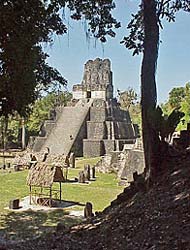
Ethnic Discrimination
One of the great myths spread by Latin American nationalisms of all hues has been that of the virtual absence of racial discrimination among their citizens, with mixed blood as a paradigm of the ethnic composition of their societies. Indeed, racism, either concealed or explicit, is one of the most visible features of everyday life and of the socio-economic structure of countries in the region. The problem is that it is a persistently denied reality and practically no government has addressed the issue.
Class difference is the argument most commonly used to explain poverty because it is the simplest: it offers a credible excuse to conceal the more uncomfortable aspects of social relations. This strategy of more or less veiled subterfuge is almost indistinguishable in speeches from Mexico to Brazil. In a complex social universe, dominated by subterfuge and euphemism, Latin American racism constitutes an unacknowledged discrimination in societies that preach an egalitarian political credo but practice the opposite. It is an emotional, and not an ideological or doctrinal, racism. However, since the wave of democratisation in the 80s, the problem began to be addressed with less prejudice as indigenous peoples became political and social actors claiming social and legal recognition of their true ethnic differences.
The Consejo Indio de América del Sur (Indian Council of South America, CISA) was created in 1980 in Ollantaytambo, Cuzco. In the 60s, there was only a handful of this type of organisations. Hundreds had been formed by the 90s: local, intercommunity and regional, with an intense international activity. In their original extremist versions, they designed a philosophy half-way between Messianism and revivalism, denouncing that all political parties, from left to right, were controlled by Creoles. Hence, even the Socialist revolution was criticised as insufficient and alien; in all events, incapable, given its ethnic origin, of understanding and appropriately addressing the indigenous problem. The emphasis on this type of philosophy can be seen in the position of those such as Demetrio Cotji, a Kaqchiquel who is a professor at the San Carlos University in Guatemala, who maintains that people theorise in accordance with the ethnic group to which they belong in a ‘colonised society’. In other words, if a Marxist belongs to the dominant ethnic group, he or she will necessarily think on the basis of that perspective.
Since the 80s, indigenous organisations began to hold congresses, publish manifestos, table petitions to governments and to international organisations and, more frequently, organise demonstrations, protest marches, land squats and national mobilisations to protest against the pillaging of their land, demanding territorial rights, political representation and preservation of the environment. The most important of these struggles were those organised by Conaie in Ecuador in 1990, 1993, 2000 and 2001, which practically paralysed the country and forced the government to negotiate agricultural issues and constitutional reforms. At the international level, their activity led the UN to proclaim 1993 as the ‘International Year of the World’s Indigenous People’ and the ‘International Decade of the World’s Indigenous People’, which commenced in 1995. The Inter-American Human Rights Commission of the Organisation of American States (its Spanish acronym is OEA) undertook the preparation of an inter-American legal instrument that year on indigenous rights. The initial emphasis on the idealisation of a mythologised past gave rise to more specific claims, such as access to land, farming loans, education, health and technical cooperation. According to Stavenhagen, territorial rights, ie, the acknowledgement and delimitation of ancestral territories are indispensable to preserve ‘the geographical space necessary for cultural and social reproduction of the group’. The Shuar-Ashuar Federation of Ecuador refuses, for example, to form a State within a State, and defends its participation within Ecuadorean society based on its own cultural values, territory and organised political system.
Totally homogenous societies in terms of race, language and religion have probably never existed. And far less so in Latin America. Ethnic maps do not coincide with linguistic maps, nor the wish of the people with the historical formation of national States: multicultural reality offers a picture of multiple strata which overlap and merge. Any new State would immediately come into conflict with irredentist minorities that would feel themselves legitimised to exercise their own right to self-determination. The principle of collective rights, in extremis, would have to accept the lawfulness of self-determination of all social units, however small or large, and segregate these, somehow, into a myriad of ethnic cantons.
Conclusions: As occurs in other areas, Brazil is taking the initiative through positive discrimination measures, based on the US model of affirmative action. With a higher population of African origin than any other American country, Lula da Silva’s government has decided to reduce social inequalities by establishing racial quotas for access to universities and the public administration. Lula is determined to re-examine the idealised notion of Brazil as a harmonious ‘racial democracy’, forcing society to face the reality of social exclusion. Between black people (pretos) and mestizos (pardos) -more than 50% of the population defines itself as such- the unemployment rate doubles that of the white population which, in addition, earns 57% more than non-white Brazilians who work in the same field. Pardos and blacks also have higher rates of delinquency and 50% fewer possibilities of having running water in their homes.
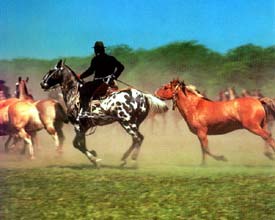
At the same time, legal claims brought by those who believed themselves discriminated have mushroomed. The problem in applying these policies in a country with 180 million inhabitants in which almost everyone admits to having ancestors of different races is elementary: who is really black, or white, or Indian? Is it sufficient to say, as is presently the case, that one is black -or white- in order to be so? Should there be a type of racial court to classify persons in accordance with a specific racial genotype? The Brazilian census includes one hundred classifications determined by skin colour, some as surrealistic as ‘white coffee’. Latin America is now aware that it has a racial problem, but it still has a long way to go before finding a solution.

